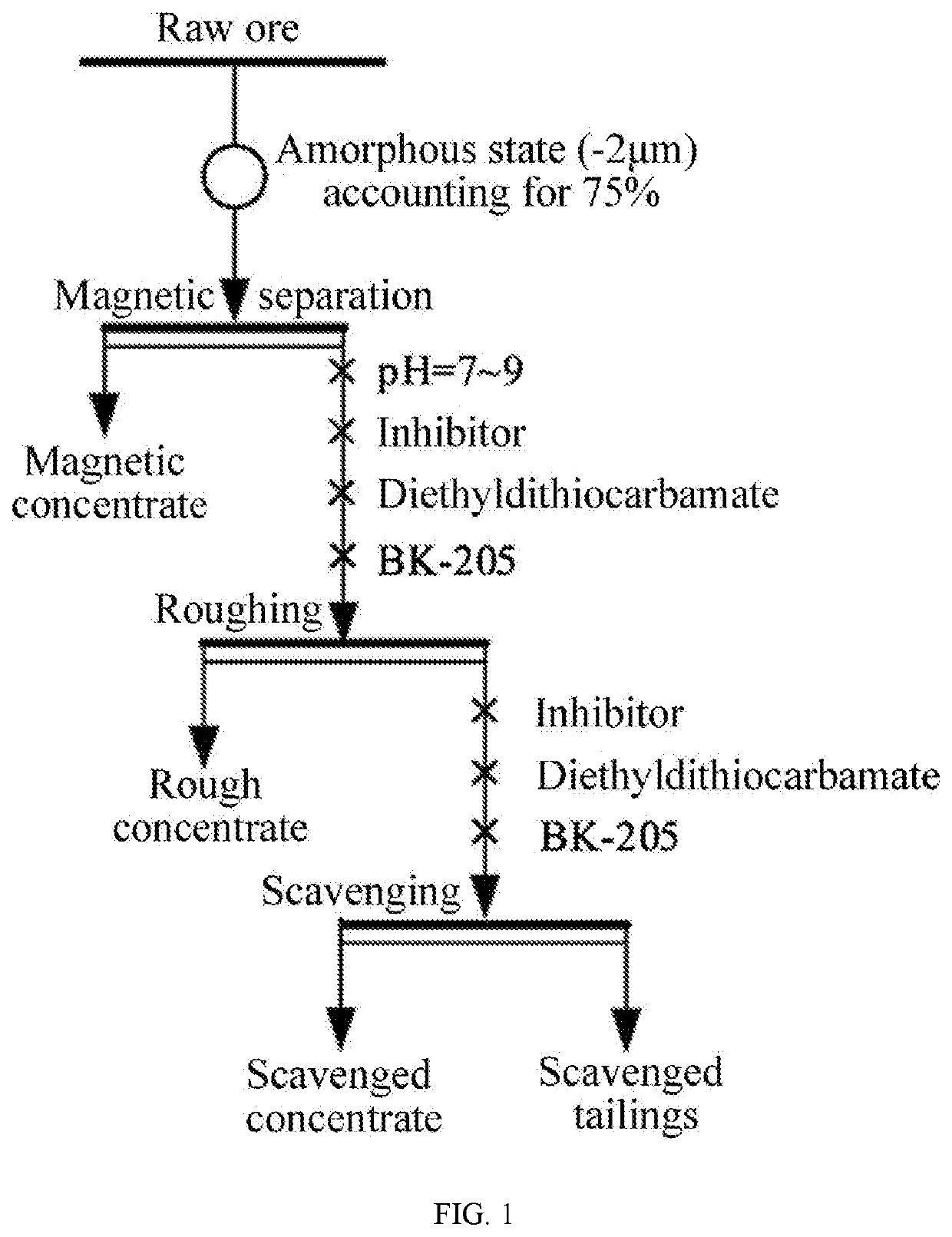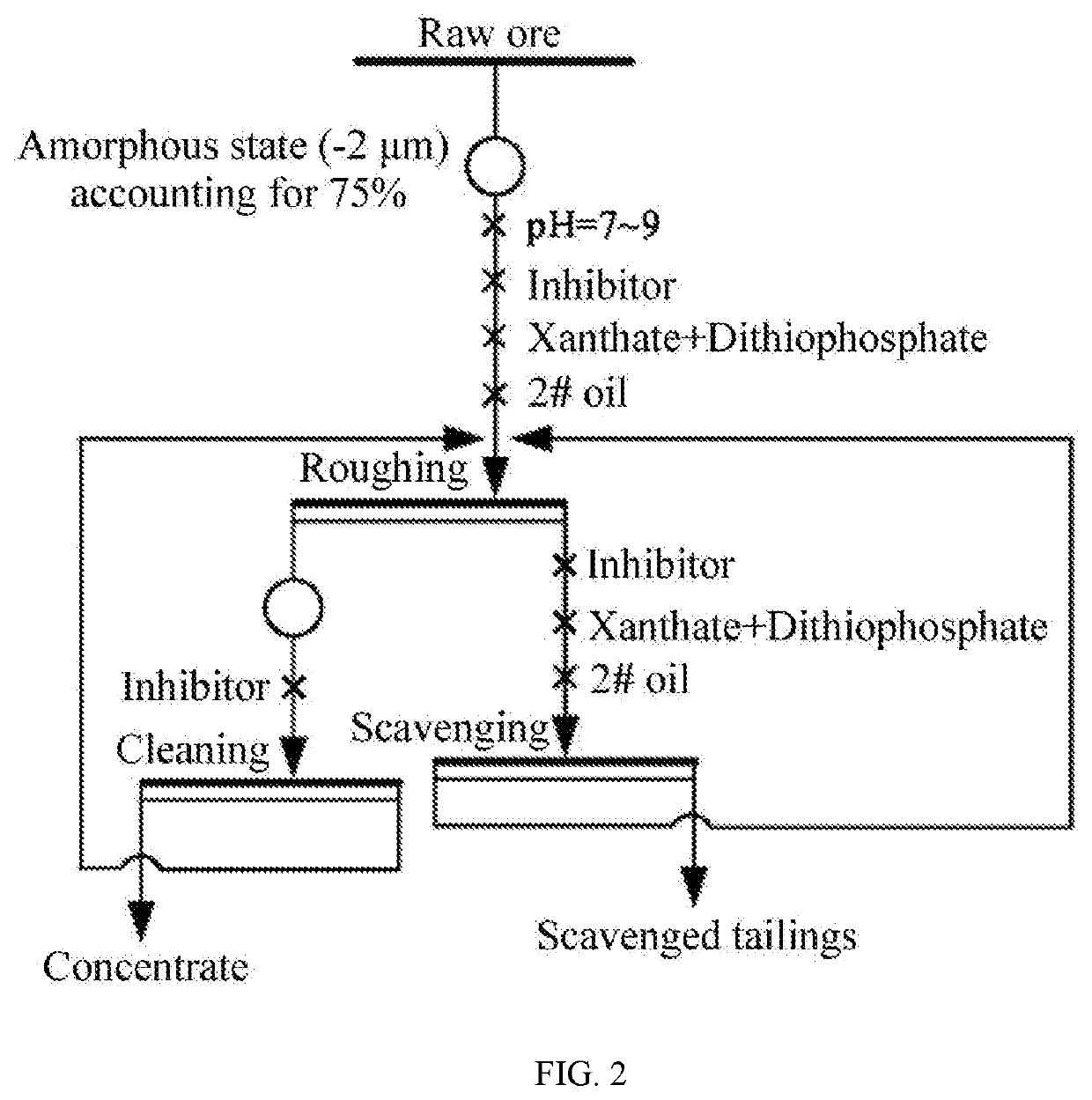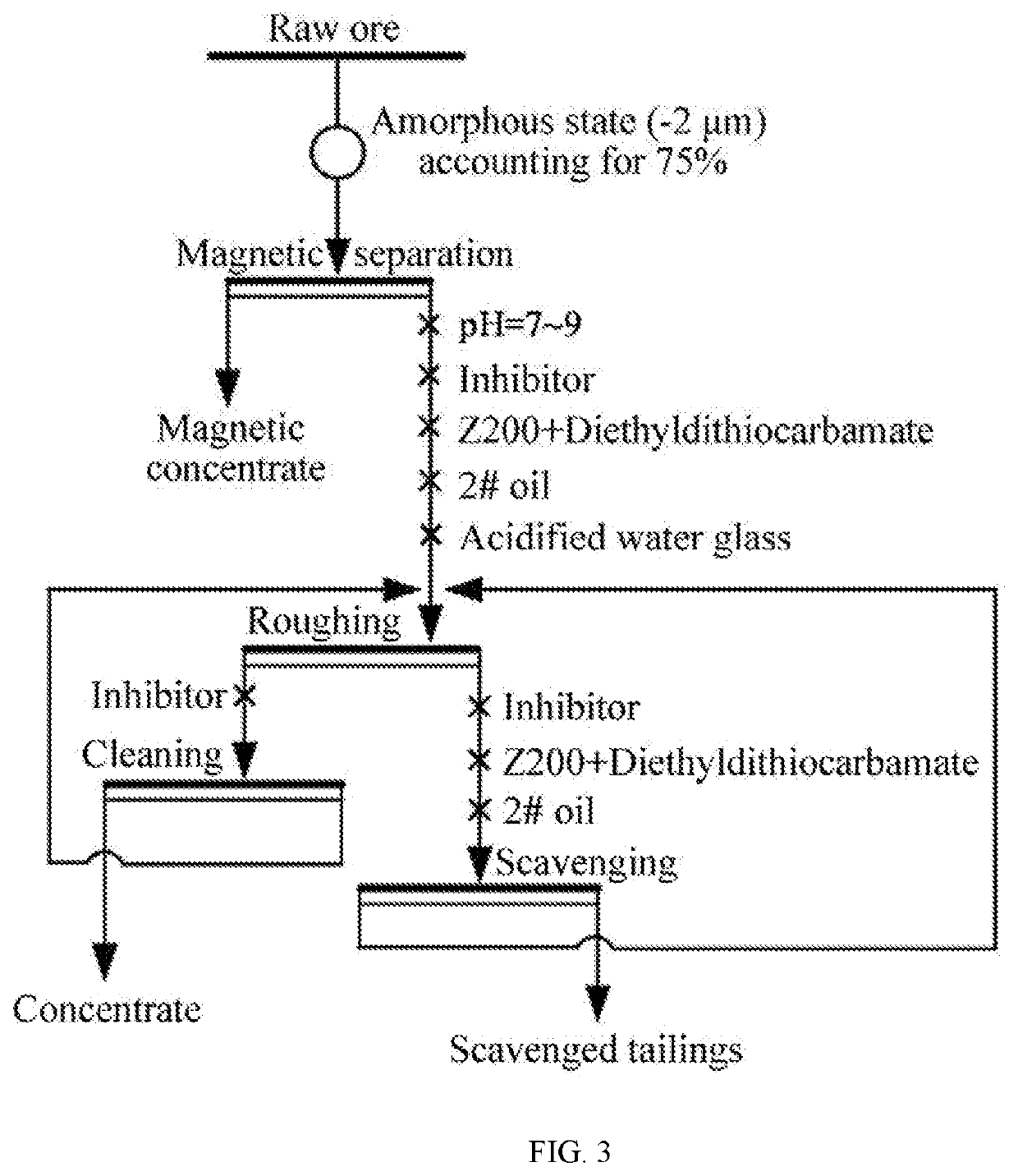Slow-release inhibitor for high-magnesium sulfide mineral flotation and application thereof
a technology of slow release inhibitor and high-magnesium sulfide, which is applied in the direction of flotation, solid separation, calcium/strontium/barium fluoride, etc., can solve the problems of difficult to achieve high-efficiency separation and enrichment with a traditional collector and inhibitor, difficult to achieve the desired flotation separation, etc., and achieve the effect of reducing the cost of the agen
- Summary
- Abstract
- Description
- Claims
- Application Information
AI Technical Summary
Benefits of technology
Problems solved by technology
Method used
Image
Examples
example 1
[0034]Naturally pure fluorite minerals were ground to amorphous state (−2 μm) for the flotation of a nickel-copper sulfide ore. The multi-element analysis results of the nickel-copper sulfide ore were shown in Table 1, and it can be observed that gangue minerals of the ore mainly included oxides such as MgO, SiO2 and Al2O3. As shown in FIG. 1, an ore dressing method including a combination of grinding, magnetic separation, one roughing and one scavenging was employed herein according to characteristics of the ore, where diethyldithiocarbamate was used as a collector, a natural fluorite particle with an amorphous surface was used as an inhibitor, and BK205 was used as a foaming agent. After added with the inhibitor, the flotation system was pulped under stirring at 1,500 rpm for 10 min. After the flotation separation, a grade and a recovery rate of concentrate nickel were 4.24% and 73.21%, respectively; a grade and a recovery rate of concentrate copper were 0.82% and 69.13%, respecti...
example 2
[0036]30 g of calcite fluoride and 20 g of sodium oleate were added to 100 mL of water and reacted at 150° C. and 10 MPa in a high-pressure reactor for 1 h to produce a nano colloid inhibitor for the flotation of a raw ore in Jinchuan No. 1 mining area. The raw ore was subjected to a mineral processing sequentially including a grinding, one roughing and one scavenging to produce a rough concentrate, which was then treated by re-grinding and re-beneficiation. Grades of nickel, copper and magnesium oxide before and after the mineral processing were shown in Table 3. A combination of xanthate and dithiophosphate was used as a flotation collector, the nano calcium fluoride colloid was used as an inhibitor, and 2# oil was used as a foaming agent. After added with the inhibitor, the flotation system was stirred at 1,600 rpm for 5 min. It can be observed that through the mineral processing shown in FIG. 2, in the ore concentrate, the nickel grade was increased from 1.63% to 6.61% and the r...
example 3
[0037]20 g of barium fluoride and 10 g of sodium dodecyl sulfate were added to 50 mL of water and reacted at 200° C. and 10 MPa in a high-pressure reactor for 0.5 h to produce a nano colloid inhibitor for the flotation of a raw ore in Jinchuan No. 2 mining area. The component and multi-element analysis results of the raw ore were shown in Tables 4 and 5. A combination of Z-200 and diethyldithiocarbamate was employed as a collector, the nano barium fluoride colloid was used as the inhibitor, and 2# oil was used as a foaming agent. The flotation system was further added with acidified water glass. After added with the inhibitor, the flotation system was stirred at 1,500 rpm for 5 min. A sequentially closed-circuit mineral processing including a grinding, a magnetic separation, a roughing, a concentrating and a scavenging was employed and shown in FIG. 3. Using the collector and inhibitor, a grade and a recovery rate of concentrate nickel were 7.02% and 82.41%, respectively; a grade an...
PUM
| Property | Measurement | Unit |
|---|---|---|
| particle size | aaaaa | aaaaa |
| pressure | aaaaa | aaaaa |
| temperature | aaaaa | aaaaa |
Abstract
Description
Claims
Application Information
 Login to View More
Login to View More - R&D
- Intellectual Property
- Life Sciences
- Materials
- Tech Scout
- Unparalleled Data Quality
- Higher Quality Content
- 60% Fewer Hallucinations
Browse by: Latest US Patents, China's latest patents, Technical Efficacy Thesaurus, Application Domain, Technology Topic, Popular Technical Reports.
© 2025 PatSnap. All rights reserved.Legal|Privacy policy|Modern Slavery Act Transparency Statement|Sitemap|About US| Contact US: help@patsnap.com



